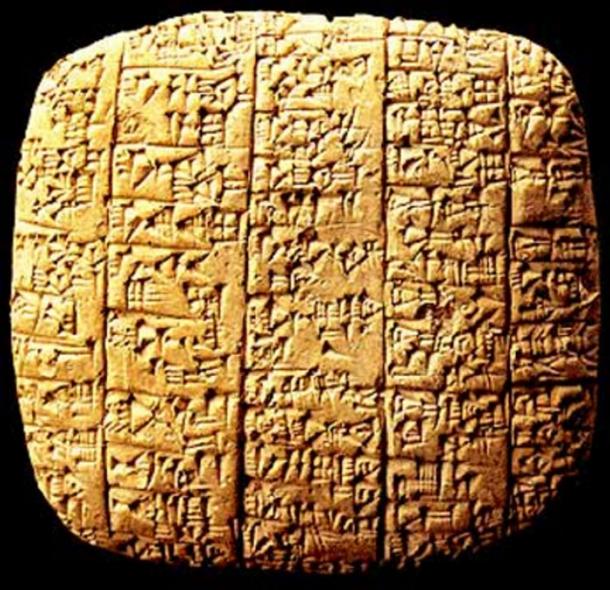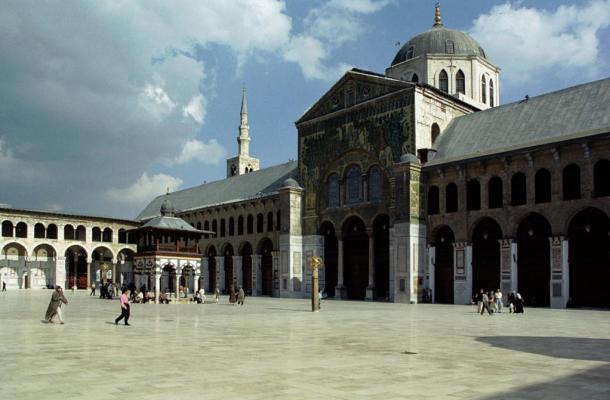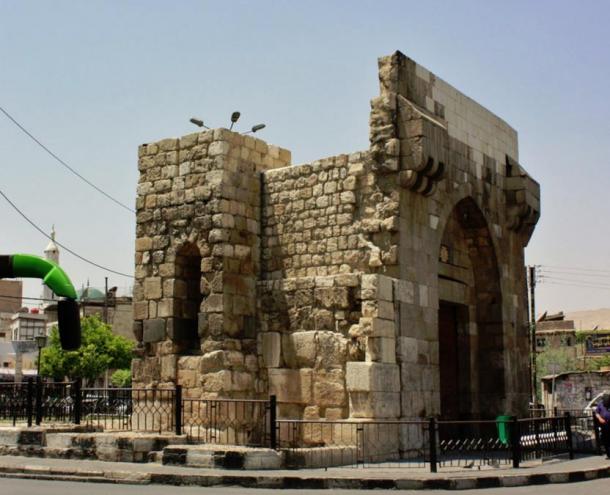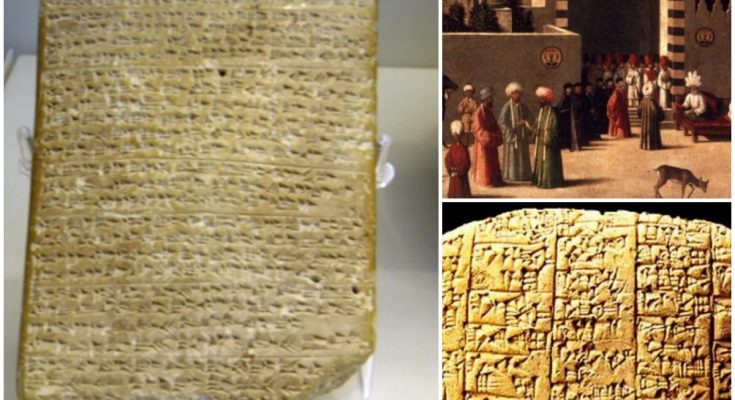The city of Damascus, which lies in the southwestern part of Syria, is one of the oldest continuously inhabited cities in the world. This city is located in a desert oasis on the eastern foothills of the Anti-Lebanon mountain range. Additionally, the eastern Mediterranean coast is situated just 80 km (49.7 mi) to the west of this city. This area is believed to have been settled as early as the 7th millennium BC. The city of Damascus, however, was founded sometime during the 3rd millennium BC.

Early Mentions of Damascus
Over the millennia, Damascus was fought over and occupied by different civilizations. These include: The Aramaeans, Assyrians, Achaemenids, Greeks, Nabataeans, Romans, Umayyads, Mongols, Turks, and the French. Many of these civilizations have left behind monuments that are still visible in the city today, though perhaps not for much longer.
One of the earliest known mentions of the name of this city is found in the Ebla tablets. It has been suggested that the Amorites of the 18th century BC referred to Damascus as Dimaski. Another mention of the city can be found in the Amarna Letters, in which it is called Dimashqa. The current English name of the city was probably taken from the Greek version.

Some of the most visible monuments in Damascus are from the Islamic period, one of the city’s more recent phases. It was in 635 AD, just three years after the death of the Prophet Muhammad, that Damascus was conquered by the Muslims. Damascus became much more prominent in 661 AD, when it was made into the capital of the newly-founded Umayyad Dynasty.

Monuments Left Behind
One of the monuments left behind by this dynasty is the Umayyad Great Mosque, known also as the Grand Mosque of Damascus. This mosque is one of the largest mosques in the world. Additionally, this is one of the oldest sites of continuous prayer in the Islamic faith. Prior to the construction of this mosque, this was the site of a Christian cathedral that was dedicated to St. John the Baptist. The connection with this Christian saint was maintained by the Umayyad’s, as a shrine in the mosque is purported to contain the severed head of the saint.

This cathedral, however, was not the first sacred building to sit on the site either. It was converted from a Roman temple dedicated to Jupiter during the reign of the Roman emperor, Theodosius I. Although the ruins of the temple’s western gate are still visible today, it is not the only remnant of the Roman period. Another less visible trace left by the Romans on the city is its planning. After the western part of Syria came under Roman rule as a result of Pompey’s conquest, the city of Damascus was completely redesigned based on Roman plans. This can be seen in the Old Town of Damascus, where it still retains its almost rectangular shape, as well as its Decumanus (east-west axis) and Cardo (north-south axis). These are considered as standard elements in Roman town plans.

Damascus is Facing the Biggest Crisis Yet
Whilst the city’s “earliest visible physical elements evidence” are from the Roman era, it is known that Damascus was once held by the Greeks. The city was taken from the Achaemenids by Alexander the Great. After the conqueror’s death in 323 BC, Damascus became a point of conflict between the Seleucids and Ptolemies, both of whom were the successors of Alexander.
Although the city switched hands between the two powers frequently, it was still part of the Hellenistic cultural sphere. In 85 BC, it was the Nabataeans’ turn to occupy Damascus, and the city’s Greek influence declined rapidly. Other nations that may have occupied Damascus prior to the Achaemenids include the Neo-Babylonian Empire under Nebuchadnezzar, the Assyrians, and the Kingdom of Israel under King David.

The city of Damascus may be facing one of the biggest crises in its history. The ongoing Syrian civil war is not only affecting the people of Syria, but also threatening its antiquities. Like many other ancient sites in Syria, Damascus is also under threat at present.
In 2013, Damascus was placed by UNESCO on its list of World Heritage in Danger. It is hoped that the ancient monuments of Damascus will survive through this present crisis, and continue to stand as testaments to the city’s rich history.



